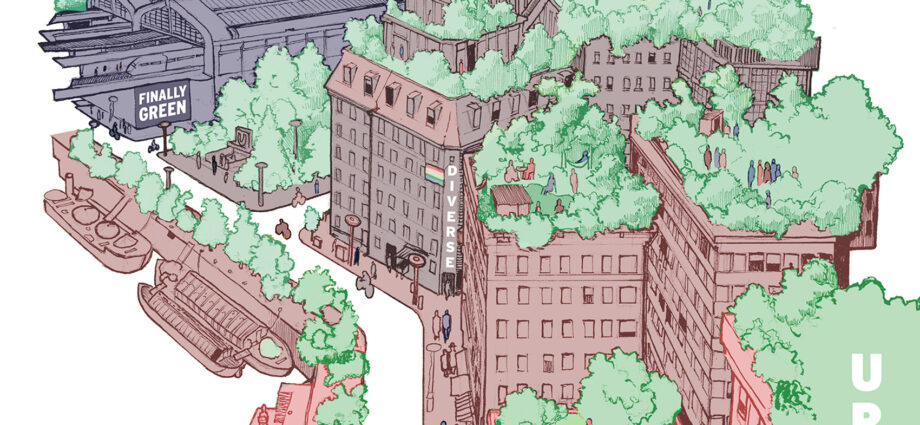Welcome to Friday Artist Features! Every Friday we feature an artist whose work often includes themes of urbanism and mobility.
This week we are featuring Berlin-based illustrator and graphic designer Fridtjof Kirste. Born and raised in Frankfurt (Oder) Germany, Fridtjof now lives and works as an illustrator in Berlin after studying applied arts at the BTK (formerly UE – University of Europe for Applied Sciences).
“…what I’m trying to do is to raise awareness for global problems and offer alternatives at the same time in my own creative way.”
Fridtjof Kirste
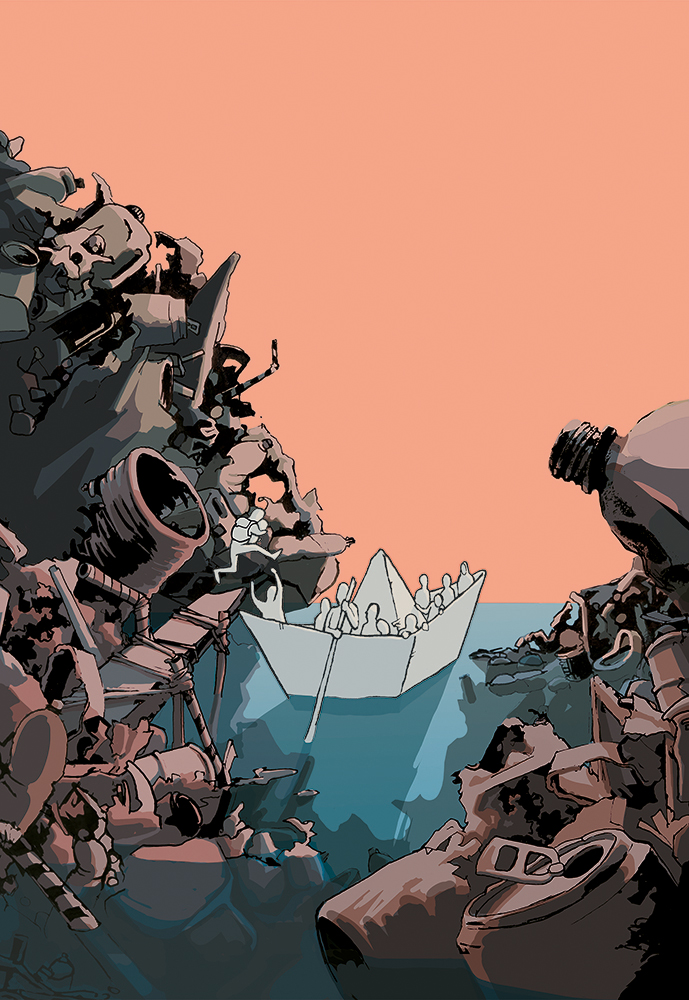
Pedestrian Space: Your bio includes that you are an “Environmental Illustrator”. Can you share more about what that means?
Fridtjof: Most of my work is focused on topics like our waste (mis-) management and other environmental issues caused but also solvable by our society. Even though I want every piece to be aesthetically pleasing, the simple decorativeness we see so much these days, is not what I aim for. So what I’m trying to do is to raise awareness for global problems and offer alternatives at the same time in my own creative way.
Pedestrian Space: We really love the ‘Urban Utopia’ piece you did. Can you share more about this and also was it inspired by a specific city?
Fridtjof: I made this artwork for the “Utopia” themed Tapirulan Illustration Contest 2020. Looking at the rather dystopic face and effects of our urban life every day, I tried to turn it 180° into a utopic version of what it could be instead. I imagined bringing nature, color, inclusiveness and safety back to our grey inhumane cities and especially city centers, which are currently characterized more by concrete, cars, hecticness, aggression and pollution. As you might see it references a view on a central part of Berlin at the train station Friedrichstraße. While drawing, I was also inspired by impressions I gathered in other cities like London and San Francisco.
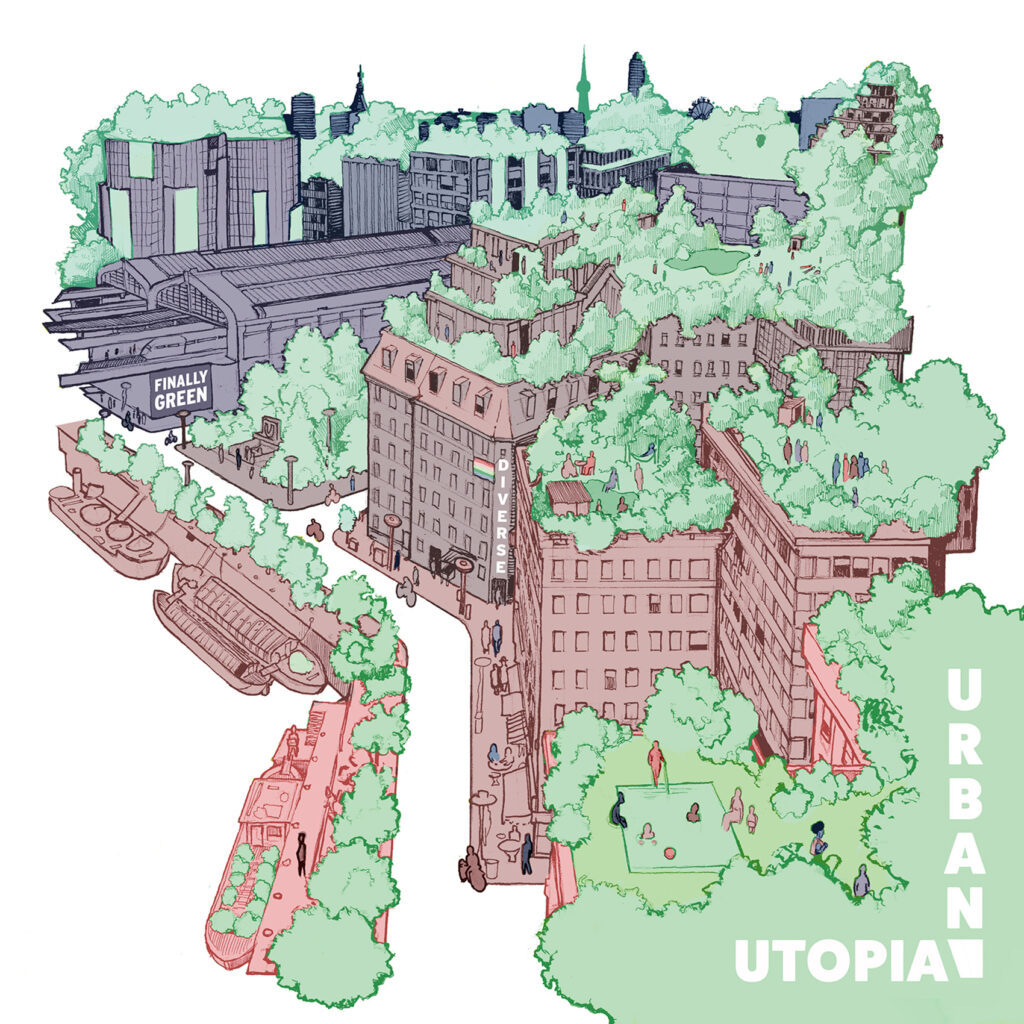
Pedestrian Space: How do issues of sustainability influence your work?
Fridtjof: Many issues of sustainability are really frustrating but at the same time they inspire me to look for solutions, so somehow they are part of my creative fuel. Researching on environmental problems offers new perspectives, that I can implement in my work. Every now and then I also get to know about other active people, projects, environmental campaigns etc. that partially restore my faith in humanity and help me to stay motivated.
“Many issues of sustainability are really frustrating but at the same time they inspire me to look for solutions, so somehow they are part of my creative fuel.”
Fridtjof Kirste
Pedestrian Space: Does your city or town of residence inspire your work in anyway (or other cities)
Fridtjof: Yes Berlin inspires me. I guess it mostly has to do with the overall diversity of this place, its people and also with my fellow artists/designers/musicians living here.
Pedestrian Space: Does urbanism influence your work?
Fridtjof: Urbanism is quite interesting to me, as it not only reveals how cities became what they are but also how they can be improved (reduce waste and emissions, increasing life quality, safer & efficient traffic, etc.). It definitely inspired me for the “Urban Utopia” illustration.
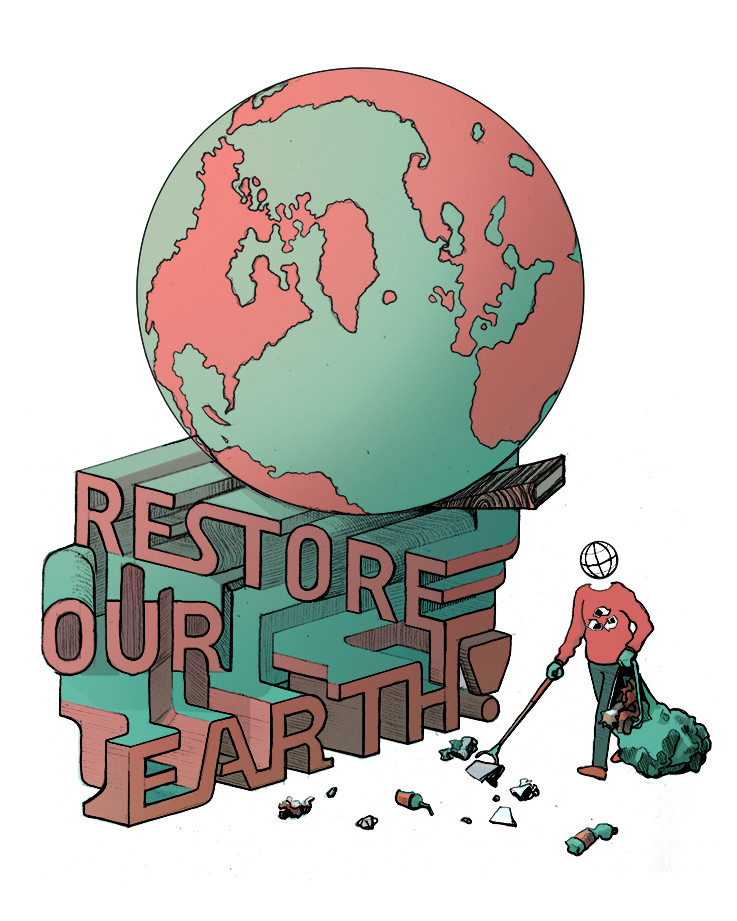
I draw with pencils, ballpoint pens/fineliners and occasionally use watercolors for my illustrations which I then edit digitally.
-Fridtjof on mediums he works with
Pedestrian Space: How do you move around the city and what is your favorite mode?
Fridtjof: I am mostly walking and riding my bike. From time to time I use public transport.
“Berlin is already one of the “greenest” cities in Europe but we definitely have a waste and attitude problem here.”
FRIDTJOF KIRSTE
Pedestrian Space: What challenges, as well as opportunities, do you see with issues of sustainability in your city?
Fridtjof: Regarding the number of parks, gardens etc., Berlin is already one of the “greenest” cities in Europe but we definitely have a waste and attitude problem here. The Recycling companies and deposit systems are working quite well but many parts of the city remain full of littered and illegally dumped waste. Convenience is often chosen over watchfulness, so many people don’t care about the trash they produce, consume or leave behind, where it goes and what it does to us and our environment. There are planned governmental restrictions- for example a ban on single-use plastic items supposed to be coming in 2021. Unfortunately, many of the laws are progressing very slow and sometimes are poorly executed. On the other hand we have an increasing amount of volunteers, businesses and NGOs trying to tackle these challenges and coming up with innovative solutions that can also be applied in other parts of the world.
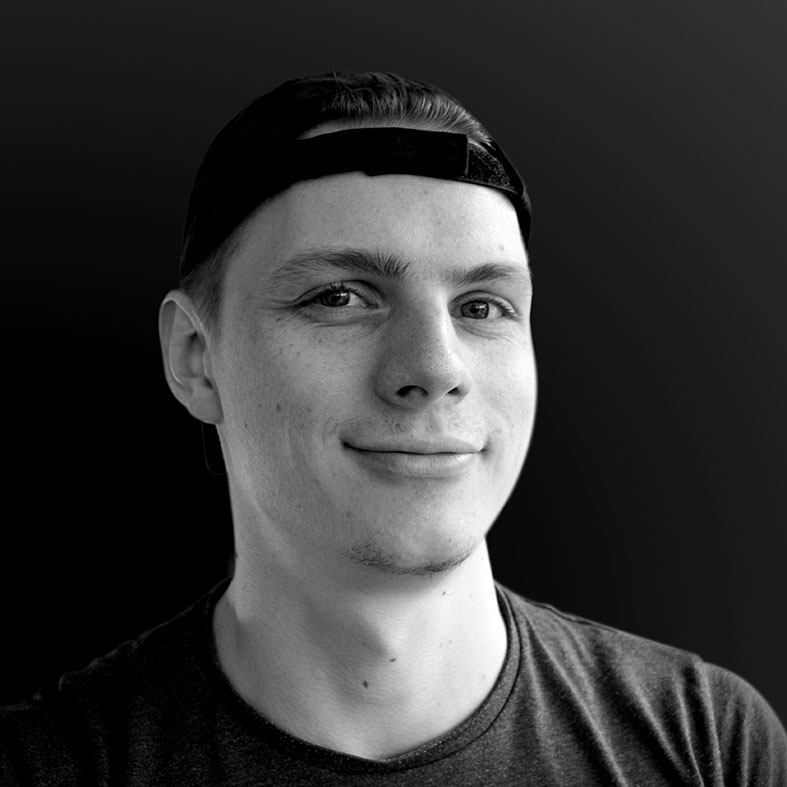
Visit Fridtjof online at https://www.fridtjofkirste.de/ & at https://www.instagram.com/frdtjf/

